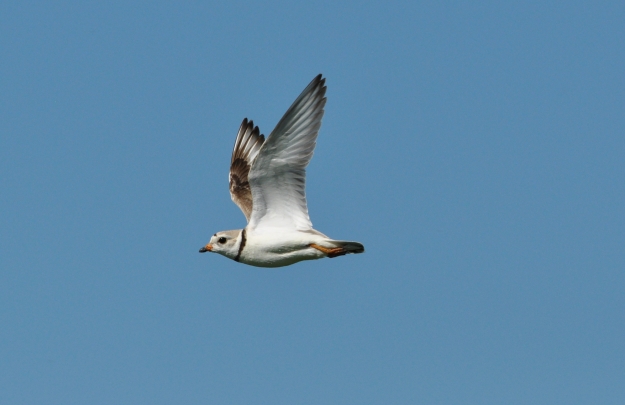Today we’re hearing from Bret Serbin, the Outreach Coordinator for the Long Island Field Office, as she shares how birds prep for long-distance migrations.
As children migrate back into classrooms, their feathered friends are migrating south for the winter.

Geese are among some 350 species of North American birds that migrate long distances for the winter months. Photo by Pixabay
The arrival of fall signals the departure of many migratory birds. Every year, approximately 350 species of North American birds participate in long-distance migration. Many cover thousands of miles to reach their wintering grounds in Central and South America.
Birds as tiny as the piping plover engage in this great migration. The typical adult piping plover weighs less than 2 ounces! Yet these petite plovers travel from their breeding grounds on such Northern shores as Long Island and the Great Lakes to winter in tropical destinations like the Bahamas and Cuba.

A tiny piping plover chick that will need plenty of nutrients to prepare to fly south. Photo by Victoria Lima/ USFWS
So how do these tiny birds fuel up for their long flights?
The key to their endurance lies in wrack, the green seaweed mixture found along the high tide line on most beaches. These giant green clumps or dried plant material may seem unappealing to humans, but for many migratory shorebirds, wrack’s a snack!

An example of beach wrack. An abundance like this can feed lots of birds and other beach creatures!
Wrack is mostly composed of sea grass that comes loose and washes ashore with the tide. Along the way, it can collect a variety of other substances. Once ashore, this rich organic mixture becomes a habitat for a number of creatures, including plants and insects. In fact, about 40 percent of invertebrate species that live on beaches depend upon wrack.
These invertebrates serve as one of the primary food sources for birds like the piping plover. The accumulation of wrack is crucial in providing this food source since the unstable conditions of the sand and the waves make it nearly impossible for plants to grow or insects to live along the shoreline.
Those big piles may not look like much to the average beachgoer, but they provide a beachy buffet for birds en route to their winter homes.
If you’re looking to help send the birds off on a successful journey, working to maintain this important food source is a great way to start. Beach grooming and driving pose serious threats to wrack, as these activities can remove wrack from its natural place on the shore or crush this delicate ecosystem and all the organisms it hosts.

Beach raking like this deprives shorebirds of a crucial source of nutrients. Photo by Wikimedia Commons
If you live in a beach community, encourage your neighbors and beach managers to minimize beach raking in order to protect this important resource. And no matter if you’re a beach bum or a landlocked bird lover, you can help educate others about the importance of this material so that the birds can snack on wrack wherever they go.
The birds’ seasonal departure reminds us to help ensure their safe return year after year. The piping plover, for instance, has experienced such population decline as to be listed as federally endangered in the Great Lakes and threatened on the Atlantic Coast and in the Northern Great Plains.

Given its low numbers, a piping plover in flight is a very welcome sight! Photo by Steven Tucker/USFWS
With this in mind, it’s important to help the birds get fortified for their long journeys so that they can return to us in the spring.













